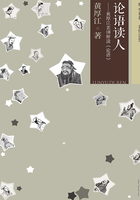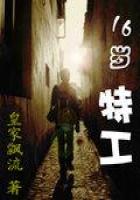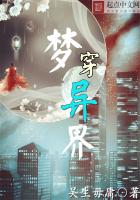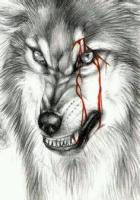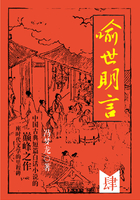Ulysses,a landmark work of the modernist literature,explores the character's consciousness,multiple-level flux of impressions,moods and complexity of inner state,including both the rational and irrational sphere,like hallucination and dream.It depicts the multi-dimensional and complex inner world of modern man,revealing the spiritual crisis of Dubliners and beyond.
Ulysses,as a most experimental novel,brings about radical changes to the modernist novel's artistic form.It incorporates techniques from poetry,painting,music,drama and movies,applying them for varying artistic purposes.Joyce's artistic originality is influenced by various schools of thought in literature and art like impressionism,expressionism,and cubism as well.It has virtually become a testing ground for the most sophisticated modernist theories.
Ulysses has long claimed the critics'attention.Until 1970s critics have generally focused upon the novel's mythological and symbolic models and characters.Until the 1990s,other literary theories like semiotics,structuralism,poststructuralism,deconstruction and others have been applied to the study of Ulysses.
The issue of style in Ulysses seems unavoidable in the study of the novel,yet,in the strictest sense,no systematic investigation into the style has ever been conducted.Tindall and Hodgart have touched upon it to a degree.Erwin R.Steinberg's The Stream of Consciousness and Beyond(1973)simply deals with stream of consciousness as a technique.He has noticed the discontinuity of narrative in the chapter "Aelous".Marilyne French's The Book as world:James Joyce's Ulysses(1976),however,intends to work out a unifying theme out of it.Her comment on style,meant to illustrate a nonexistent unification of theme,sounds rather plausible.Peake's James Joyce's:the Citizen and Artist,regretfully with no delimitation of style and techniques,offers substantial help with comprehending the novel.Yet he intends to show how Bloom is initiating the birth of an artist Stephen.
Karen Lawrence's Odyssey of Style in Ulysses(1981)perceives,in contrast with the initial style,a narrative gap in "Aeolus",which indicates a breakdown with the authority of style established in the former chapters.With her stubborn adherence to deconstruction theory,she alleges the transformation of styles in the latter parts serves no function except for its own.
So far some tentative inference can be reached.First,no deliberate distinction has ever been made between style and technique.Second,style in Ulysses is generally approached in relation to its narrative mode.Their weakness is ostentatious.Firstly,stream of consciousness style,a style of paramount importance for Ulyssess,is overlooked,even in Lawrence's study.Secondly,critics basically take a negative view of Joyce's stylistic experiment.To put it simply,there exists a gap between the style and content.
Among the Joycean study academic circle in China,Professor Li Wei-ping's Joyce's Aesthetics and Art of the Novels(2000),devotes one chapter particularly to Ulysses,providing acute analysis of its important stylistic features.Professor Li's book,as a whole,serves as an illuminating and inspiring guide to further study of Joyce.
It would prove worthwhile and invaluable to execute a systematic research,comparatively speaking,into the protean transformation of styles in Ulysses.Firstly,style,to a great extent,is a threshold leading to Ulysses'artistic experiment in that it is a vehicle any literary artistic reform must resort to.Secondly,those issues involved in Joyce's experiment remain unresolved even today,for instance,the liberation of language expression from its own conventional bondage,the relation between language and reality,the delimitation between literary and nonliterary language,and the incorporation of other artistic forms by means of language into literature.
Style is a key issue for Joyce's artistic career.He has been experimenting throughout his life.His works like Dubliners,A Portrait of the Artist as a Young Man,Ulysses,Finnegans Wake chronologically signal his progressive stages in artistic experiment,including style.
It is particularly true with Ulysses.Joyce once said,his eighteen chapters,presenting eighteen problems,called for eighteen techniques and many points of view,each as suitable to the matter and its possibilities as glove to hand or—since techniques cannot be separated from their matters without injury—as flesh to bone.
Style in my dissertation is literary style,which means language is described in terms of its aesthetic function for the representation of theme and characterization.To be specific,all devices,nearly every linguistic utterance,such as sound of word,external form of word,metrical pattern,word order,syntax,clause,can all be aesthetically analyzed and justified.
With intent to securing an objective and impartial view of Joyce's stylistic experiment in Ulysses,several other factors concerned are taken into consideration as well.Firstly,the author's artistic motive.Secondly,the correlation between stylistic metamorphoses and narrative mode.Thirdly,influence of the avant-garde literary theory and artistic thought at the time,including artistic forms like music,painting as well.My dissertation,composed of six chapters,does not intend to tackle the novel chapter by chapter.It examines and explores the most distinctive stylistic aspects of Ulysses.
Chapter one in my dissertation approaches the stream-of-consciousness style.The Stream-of-consciousness novel,meant to represent the flow of thought yet without resorting to the narrative methods and conventional dialogues,poses big challenges to the novelist.Joyce has conducted pioneering experiment in Ulysses and come up with ingenious solutions.First,through what language pattern can the author simulate the reality of consciousness?According to William James,a character's inner mind is ceaseless and chaotic.How to capture its transitory and evanescent movement remains a problem.Richardson,credited as a pioneer,proposes the idea of "description of the transitory thought",yet fails to carry it out in her practice.Gertrude Stein,employs her characteristic repetition,only ends in a kind of dullness.Joyce resolves the problem by breaking down the conventional syntax order,through which the word order is subordinated to the irregular movement of inner consciousness.
Second,through what method can the author represent the reality of consciousness?"Representation" here means neither narration nor description.The character's inner consciousness stays clear of any intrusion or interference from the narrator to the effect that the reader hears his voice directly.Joyce,as a pioneer,employs free direct speech in Ulysses.
Third,through what language can the author simulate the inner consciousness?William James coined the phrase stream-of-consciousness,yet soon realized that no language can afford to articulate the inner consciousness.Robert Hans postulates the existence of non-verbal and sub-verbal states,yet comes up to no practical solution.Joyce,in order to imitate the complexity and multilevel of inner consciousness,taps the linguistic resources by splitting,truncating,combining the words and phrases available,fragmenting the sentences,inventing unintelligible signs.
Fourth,the stream-of-consciousness style metamorphoses,from Stephen to Bloom and eventually to Molly,can be accounted for from two perspectives.First,Joyce applies varying styles appropriately peculiar to each character.Second,the whole process stands for Joyce's exploration to get the style mature,which means in Molly's chapter any narrator's intrusion is barred from her consciousness.The reader hears her solitary voice from beginning to end.Looking back upon the first chapters written in the initial style,the readers can detect two voices:one is the narrator's,the other is the character's.How can "Penelope”",the most famous and most perfectly executed specimen,move forward,with the absence of a manipulating narrator,solely through Molly's self-address?To achieve the purpose,Joyce employs such strategies as creating new time-span,frequent use of exclamatory syntax,and mental verbs,bare use of narration sentences,profusion and referential implicitness of pronouns,and the blurred sense of time.Thus the whole chapter is dominated by Molly's highly emotional voice.
Chapter two focuses on the journalistic style in "Aeolus".Joyce employed boldfaced newspaper headlines to organize the narration and arrange them with modern typography.Joyce's drastic shift in style in Aeolus has provoked highly negative response from the critics.Karen Lawrence,Jennifer Liven,Mckenna,and Richard Ellmann take the headline either as arbitrary and capricious,repeatedly intruding upon the narrative,or as an estrangement from the authority of narrative established in the former chapters.Actually,Joyce's drastic shift of style can be well accounted for by the changed point of view,in addition to the changed "scene",the "rhetoric" and the specific images employed by Joyce,and Dubliners'paralysis situation in the chapter.
Chapter three explores the impressionistic style experiment in "Siren".Joyce,in Siren,makes the boldest experiment with music in pursuit of an impressionistic effect of auralized color and visualized sound.By manipulating rhythm,repetition,alliteration,compressed compounds,varied distortion of sound and syntax,Joyce turns the whole text to sound,and to a narrative like musical score as well.Contrary to Karen Lawrence's accusation of word play,Joyce attaches specific recurrent visual and aural images to various part characters.More importantly,Joyce succeeds in establishing a correlation between myriad aural images and inner world of individual emotion,through which every shift and nuances of emotion are couched vividly.
Chapter four deals with the imitation and parodic style in "Oxen of the Sun".Joyce carries out an extraordinary experiment by imitating a chronological sequence of styles from primitive language to contemporary;it begins with a fusion of Gaelic and Latin to Anglo-Saxon and ends in a frightful jumble of 20 th century English,including
all those great prose masters'styles from Mandeville to Ruskin.Critics like C.H.Peake,Timothy Martin,James H.Maddox,Jr.,generally challenge whether the techniques are sufficiently subordinated to the thematic purposes.James Joyce,as can be proved,has conducted the experiment with several purposes in view:first,he intends to establish a parallel relation between the embryonic development of styles and a symbolic gestation of Stephen,including the birth of a child;second,through ingenious manipulation,Joyce manages to have the processions of stylistic imitation and the thematic purposes harmoniously unified;third,Joyce manages to turn the sequence of stylistic imitation into a series of parodies.
Chapter five is concerned about the expressionistic style in "Circe".Expressionism,a term used to describe a literary and artistic movement,emphasizes the truth deeply buried in the inner soul.Expressionistic technique is characterized by distortion,fragmentation,and overstated expression of emotion.In "Circe" Joyce has experimented with an expressionistic style to dramatize the characters'subconscious world,i.e.,their suppressed desires,hidden feelings,fear,guilt.Through what form of language the subconscious can be represented remains a mystery,in a way,even today.Joyce experimented with grotesque and bizarre images,with animalized versions of characters,with speech of animated objects,and with the character's absurd rhetorical flamboyance.
Chapter six deals with the impersonal style of "Ithaca".Impersonality originally is a narrative method demanding the author to remain impartial and objective.In "Ithaca" Joyce experiments with an impersonal style,attempting to strip the language of its emotional connotations and to contribute to the characters'state of mind,the equanimity.First,Joyce switches from the conventional narrative to a cold catechistic method,i.e.,a set of questions and answers.Instead of the human voice of a narrative persona,it offers a catalogue of cold and hard facts.Second,instead of unrolling a series of events or development,Joyce applies a set of logical methodology,such as comparison and contrast,analysis,listing examples etc.,to resolve every question.Third,scientific jargons,balancesheet,booklists,advertising slogans,etc.are all put to use.All the stylistic techniques contribute to the matter-of-fact and rational effect required in "Ithaca".
Stylistic metamorphoses in Ulysses are aesthetically or thematically justified.Every change is an exploration for language potentials,a compliance with Joyce artistic and thematic purposes,and a fusion with other artistic forms.This dissertation is intended to give a detailed discussion and analysis of the varying styles in Ulysses,through which Joyce achieves his artistic purposes in depicting the spiritual and moral paralysis in Dublin.The present study is an attempt to contribute a bit to the further understanding of the modernist master,James Joyce.



